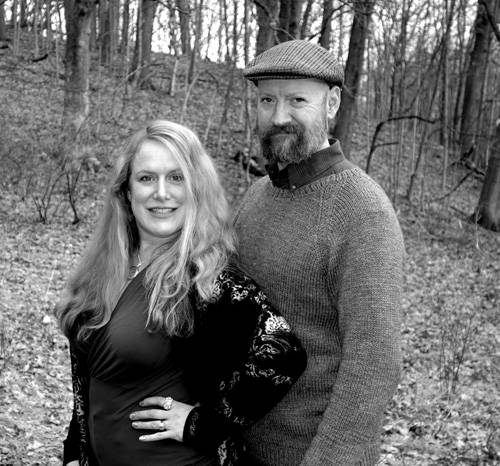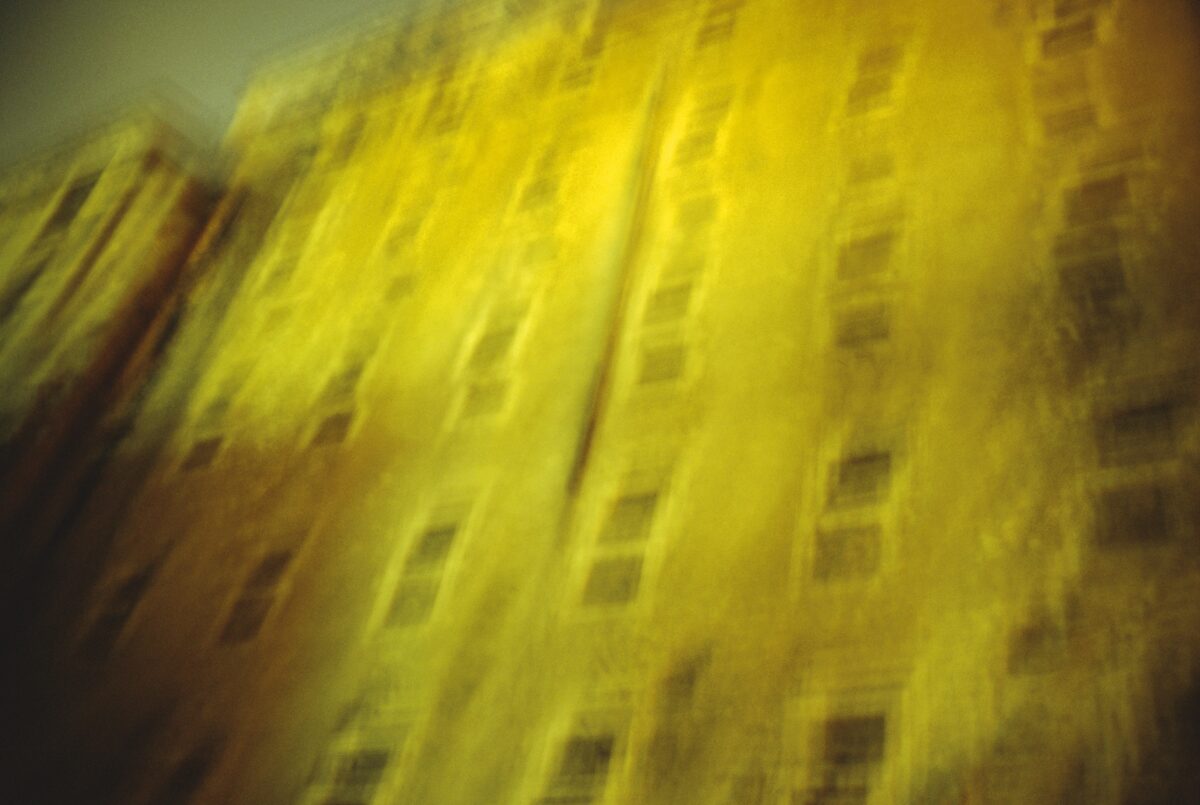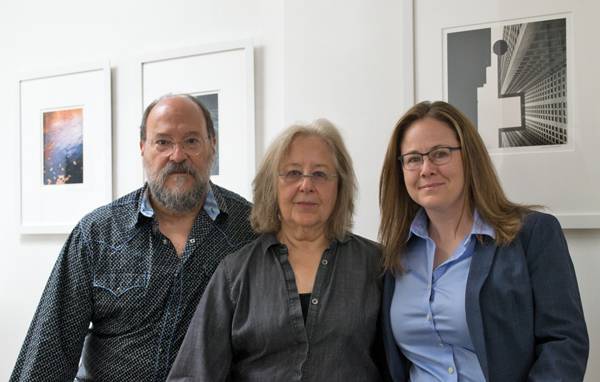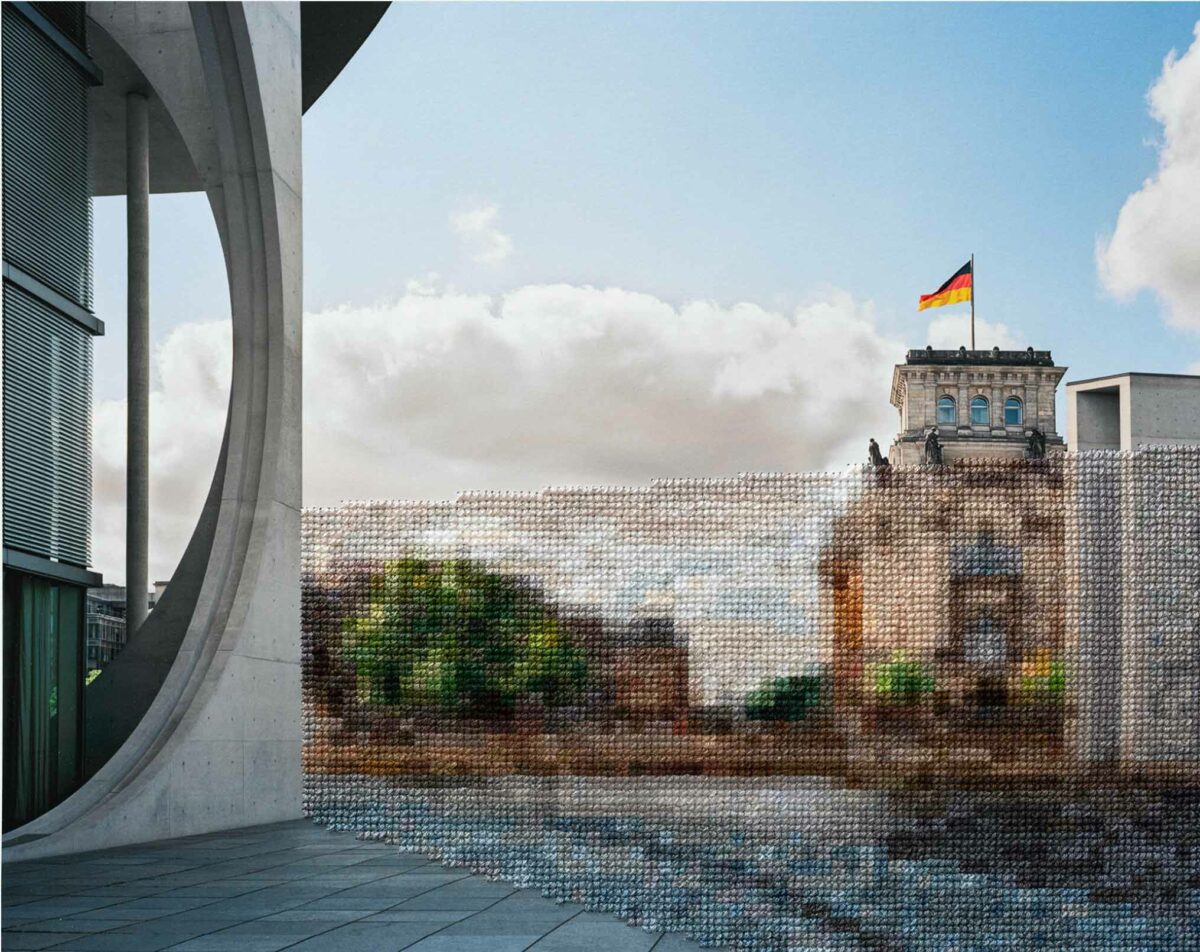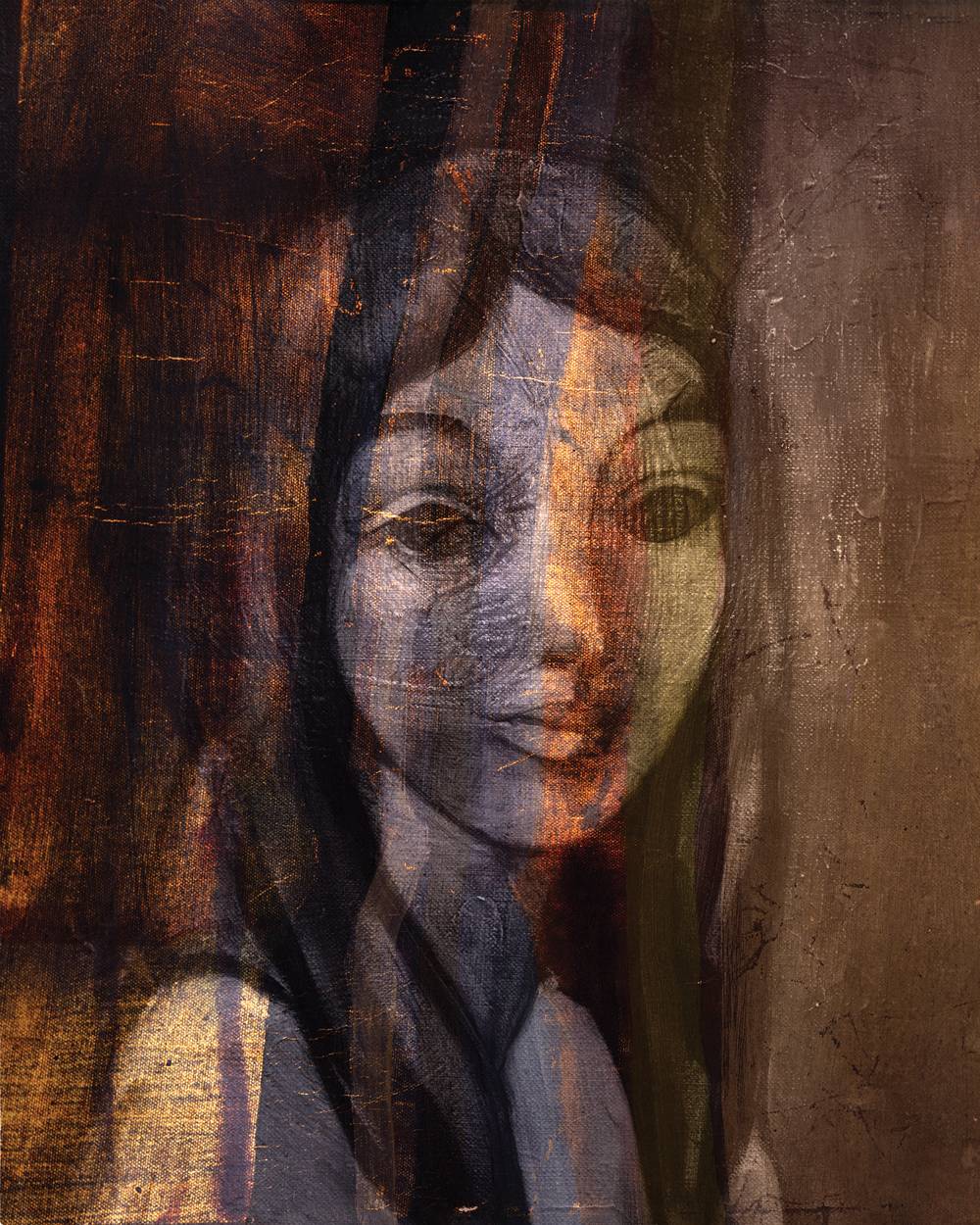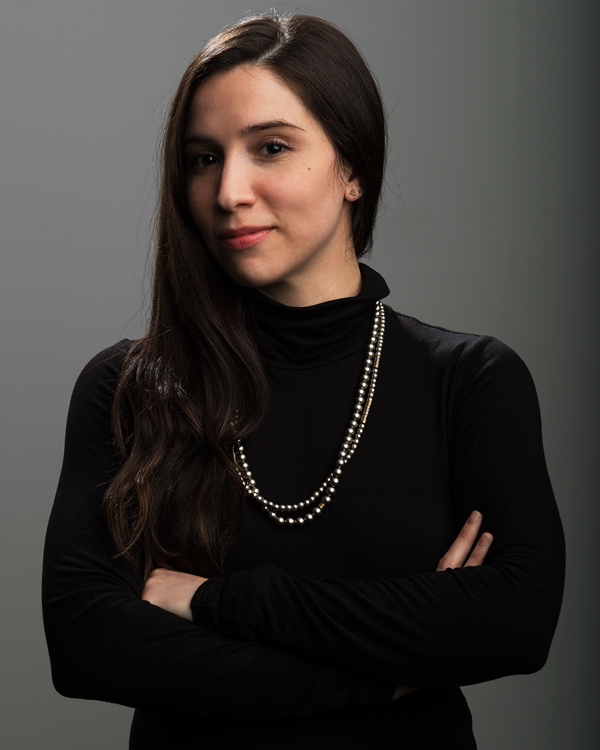

The photographs that made up Hannah Whitaker’s exhibition Hide Your Daughters at Marinaro Gallery don’t look like photographs. It’s their strongest characteristic, but also, ultimately, their weakest.
Whitaker’s works are created through an arduous process of in-camera masking and multiple exposures in which she samples her own photos of everyday textures – metal grates and fences – as well as pieces of colored paper, then cuts them up and creates various screens to alter a 4×5 sheet of film in the camera. The results look like collaged cutouts or Photoshop sketches, with repeating shapes and textures.
The first references that come to mind aren’t necessarily photo-based, but that may be fitting, since the pictures are very much about translation and communication. The playful geometric patterns suggest elementary graphic design, evoking the Memphis Group and other ‘80s-era design tropes. The allusions to contemporary photography have to do more with formal decisions than the aesthetics of the pictures themselves – Lucas Blalock’s use of clone stamping (a Photoshop tool), or Jessica Eaton’s in-camera experiments.
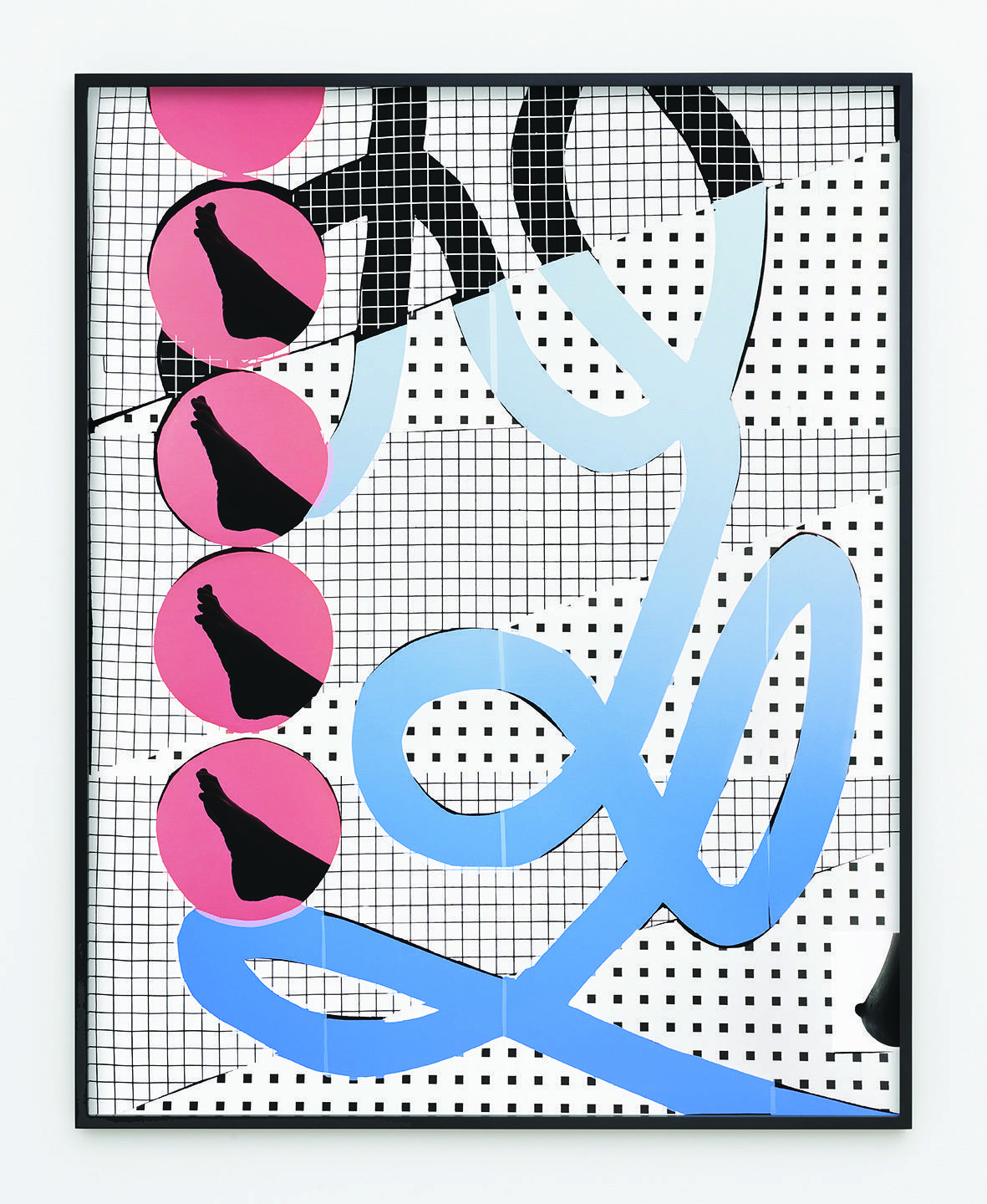

Also spliced throughout the series were silhouettes of arms, hands, and feet whose arrangements mimic signs and symbols. In a pair of works titled Thumbs Up and Thumbs Down (both 2017), the eponymous symbols form a cheeky take on criticism in the era of social-media “likes.” In Talk, (2017), a sequence of sign-language symbols formed by a hand are arranged to create a message at the bottom of the image. The decoded message, though, reads like gibberish – a combination of random letters and numbers. Then again, perhaps that’s not the point. These symbols wind up representing the semiotic constraints of visual communication, especially in these the days of emojis and rampant image-sharing, where entire conversations are had without the exchange of words.
The surfaces of Whitaker’s photos aren’t as interesting as the formal gestures and in-camera experimentation behind them. But even up close, it was hard to distinguish the photographs from a rough-hewn Photoshop sketch, and it’s hard not to think that the pictures would be stronger if we didn’t need press-release exposition to appreciate the inspired technique behind them.


